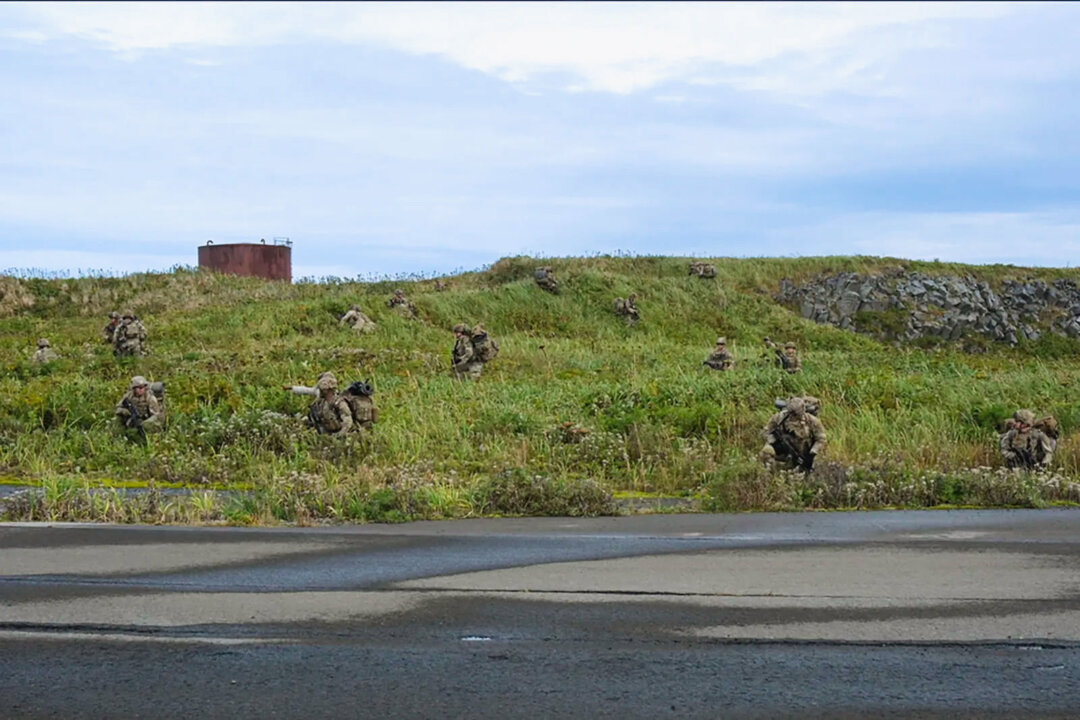Sen. Dan Sullivan (R-Alaska) called recent Chinese and Russian exercises near Alaska ‘Russia’s largest joint naval and air drill since the Cold War.’
In response to a recent uptick in Russian military incursions near U.S. territory, the U.S. military has deployed more than 100 soldiers along with advanced weaponry to a remote island in Alaska’s Aleutian chain.
Both Russian and Chinese military activity in the region has increased. As part of this deployment, soldiers were stationed on Shemya Island on Sept. 12, bringing with them two High Mobility Artillery Rocket Systems.
The island, located about 1,200 miles southwest of Anchorage, hosts an air station that dates back to World War II. These moves, described as a “force projection operation,” are a direct response to a surge in Russian and Chinese military drills near U.S. airspace.
The North American Aerospace Defense Command (NORAD) said it recently detected and tracked Russian military planes operating off Alaska over a four-day span—with two planes each on Sept. 11 and Sept. 13–15.
During a routine patrol in the Chukchi Sea on Sept. 16, the Coast Guard Cutter Stratton also identified the ships, which included two submarines and a frigate. The vessels crossed the U.S. exclusive economic zone but remained compliant with international maritime norms.
Pentagon spokesperson Maj. Gen. Pat Ryder said they are watching these occurrences.
“It’s not the first time that we’ve seen the Russians and the Chinese flying in the vicinity and that’s something that we obviously closely monitor and it’s also something that we’re prepared to respond to,” Ryder said during a press conference at the Pentagon on Sept. 17.
He said that although the incursions are a matter of concern, they do not currently pose a direct threat to U.S. national security.
Sen. Dan Sullivan (R-Alaska), a member of the Senate Armed Services Committee, in a Sept. 17 statement urged the U.S. Navy to reopen its former base at Adak, Alaska, which was closed in 1997.
He said the U.S. military had deployed a guided missile destroyer and a Coast Guard vessel to the western region of Alaska as Russia and China began the “Ocean-24” military exercises in the Pacific and Arctic oceans on Sept. 10. He called the exercises “Russia’s largest joint naval and air drill since the Cold War.”
“As the world becomes more dangerous, Alaska continues to be on the frontlines of authoritarian aggression,” Sullivan said in the statement. “In the past two years, we’ve seen joint Russian-Chinese air and naval exercises off our shores and a Chinese spy balloon floating over our communities. These escalating incidents demonstrate the critical role the Arctic plays in great power competition between the U.S., Russia, and China.”
Sullivan praised the U.S. military’s response, including the deployment of soldiers to the Aleutian Islands and naval assets to the region, but called for more permanent actions.
He also urged Congress and the Biden administration to pass the National Defense Authorization Act to strengthen the U.S. military presence in Alaska and send a clear message of deterrence to adversaries such as Russian President Vladimir Putin and Chinese leader Xi Jinping.
Sullivan’s call for action aligns with the broader U.S. military focus on the Arctic.
The Department of Defense’s 2024 Arctic Strategy highlights the strategic significance of the region, especially as it becomes a focal point for U.S. defense efforts against rising Russian and Chinese challenges.
Military analysts have also pointed out that recent joint military exercises conducted by Russia and China signal a deliberate challenge to U.S. dominance in the Arctic, a key region for missile defense and natural resources.
The Associated Press contributed to this report.

